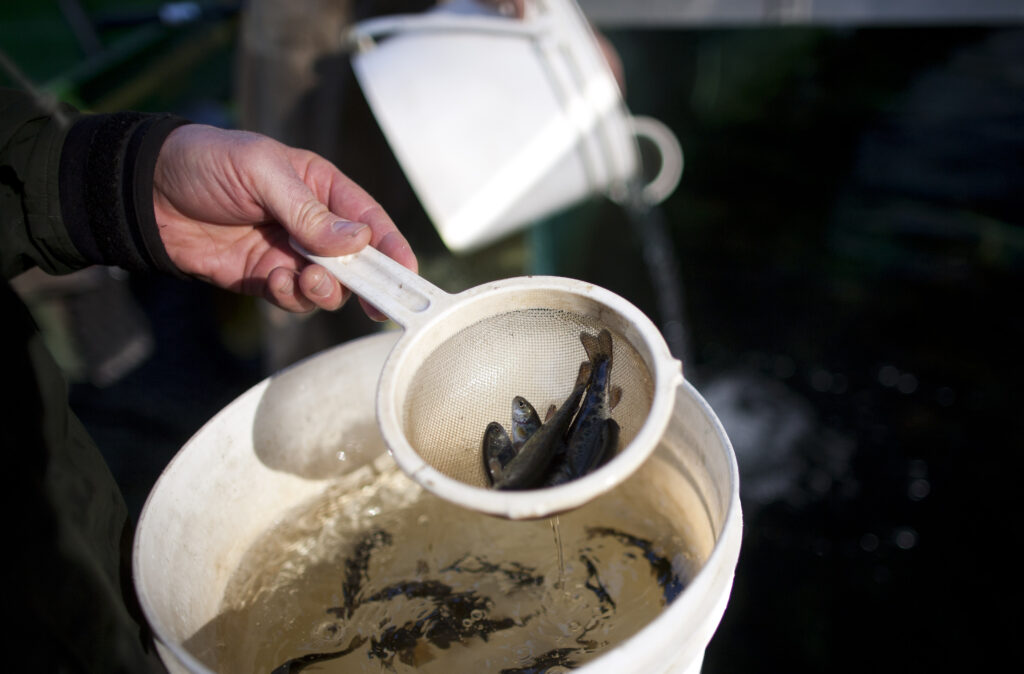Each year, in consultation with provincial fisheries managers, the Freshwater Fisheries Society of BC stocks more than 600 lakes and rivers throughout the province. To perform this monumental task, the Society’s six major hatcheries annually produce up to seven million fish of five different freshwater species. Four strains of the rainbow trout species are reared, and two strains of cutthroat trout.
With many environments and management needs throughout the province, not all these strains work ideally in all situations. Biologists need to consider conditions like a lake’s productivity, water quality, location, and species composition. Management must consider the ultimate experience for the angling public: success for families or novices, or trophy fishing for experienced anglers. For our hatchery program, the Society has both a desire and a need to look at multiple strains of fish, but how do we evaluate the differences between them?
Considering Characteristics: First, we must consider what makes the source population of fish interesting and valuable. Their original environment and its water quality might affect the fishes’ aggressiveness or their tolerance for warm temperatures, high pH, or low oxygen. We must then consider the size and strength of the natural population to ensure that removing broodstock will not harm it. Finally, how easy will it be to collect fish for broodstock at spawning time? Are the fish in one location, or scattered?
Evaluating Performance: Once we have our brood fish, we must determine their performance in a variety of environments outside of their natural habitat (including the hatchery). We want to know if the key traits of interest will be maintained when the fish are stocked into a new environment. We do this by characterizing their growth, survival, and behaviour in the hatchery, and by exploring their performance in new lake settings. The needs of the stocking program determine which lake types are tested.
For example, strains have been introduced into small competitive lakes to assess their performance in the presence of competitor species like redside shiners, suckers, and northern pikeminnow, which are found in more than half the lakes across B.C. and can be so numerous that they present a significant challenge to stocking. Pennask strain rainbow trout provide amazing fisheries, but do so mainly in monoculture lakes. They do not fare as well against competitor species as the Blackwater strain, generally the strain relied upon for stocking lakes where mixed species compete.
Our overall goal is to stock the right fish in the right place to support the fishing experience of every angler in our province.
